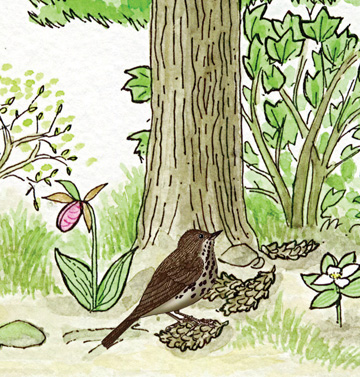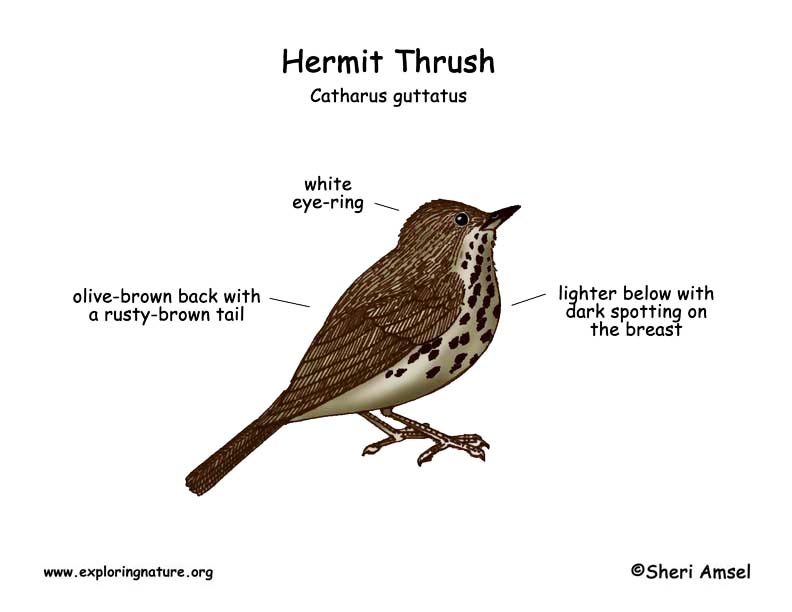

They breed in southern Alaska through Canada, south to the northeastern U.S. and down into the Appalachians Mountains, and the southwest U.S. They spend the winter on the western coast of the U.S. and throughout the eastern U.S. south of Connecticut to Central America.
They are located in moist woodland areas.
They have an olive-brown back with a rusty-brown tail. They are lighter below with dark spotting on their breast and a white eye-ring.
They lift their tail over and over. They have a strong flute-like song.
They eat insects and berries.
They build a big, cup-shaped nest in a small tree or on the ground. They make it out of grass and twigs and anything else they can find. They line it with grass, hair, moss, and such. Females lay 2 – 5 light blue eggs with brown spots.
Kingdom: Animalia
Phylum: Chordata
Subphylum: Vertebrata
Class: Aves
Order: Passeriformes
Family: Turdidae
Genus: Catharus
Species: C. guttatus
When you research information you must cite the reference. Citing for websites is different from citing from books, magazines and periodicals. The style of citing shown here is from the MLA Style Citations (Modern Language Association).
When citing a WEBSITE the general format is as follows.
Author Last Name, First Name(s). "Title: Subtitle of Part of Web Page, if appropriate." Title: Subtitle: Section of Page if appropriate. Sponsoring/Publishing Agency, If Given. Additional significant descriptive information. Date of Electronic Publication or other Date, such as Last Updated. Day Month Year of access < URL >.
Amsel, Sheri. "Thrush (Hermit)" Exploring Nature Educational Resource ©2005-2024. December 13, 2024
< http://exploringnature.org/db/view/Thrush-Hermit >

